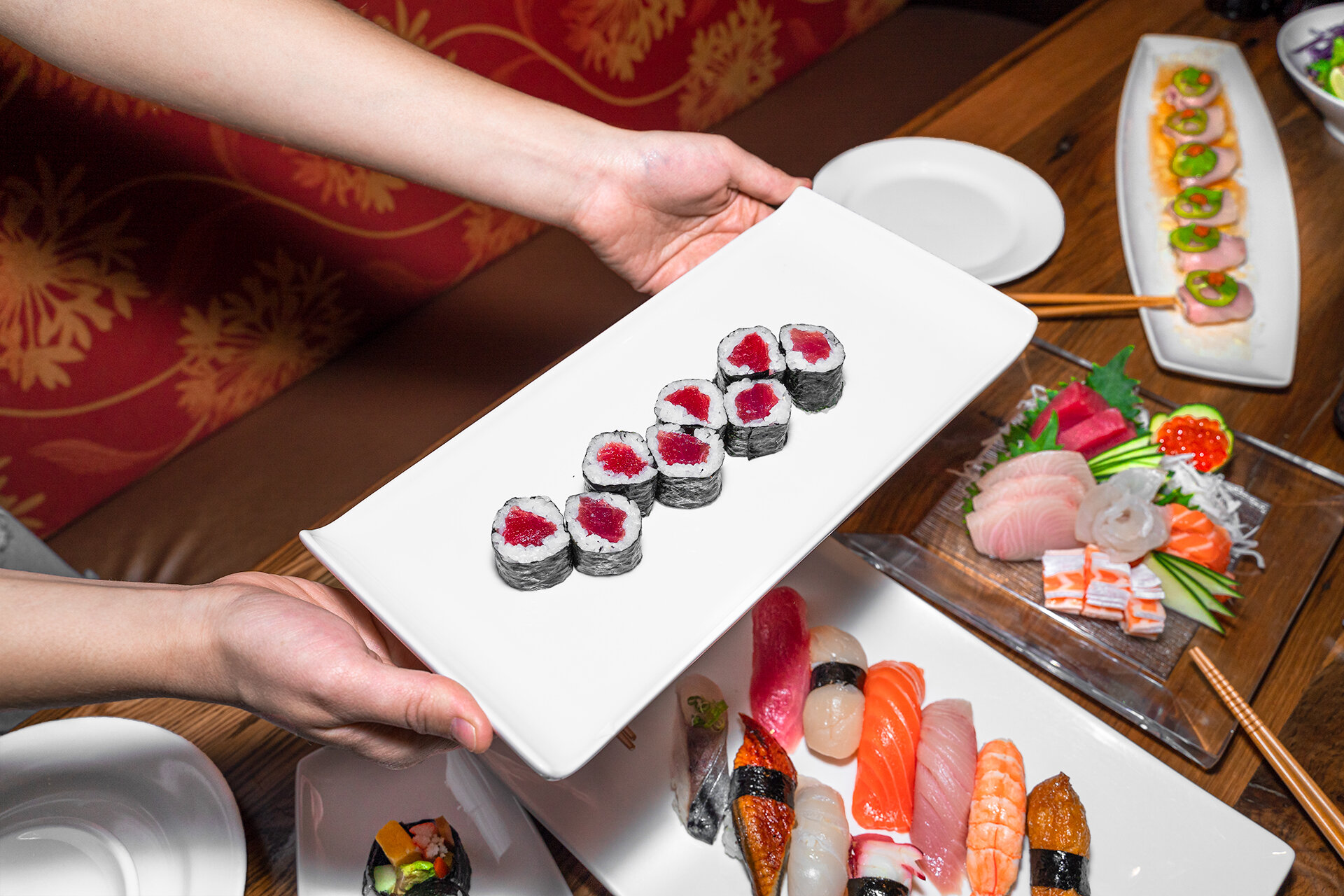Sushi Ingredients
Nori
It is a mild, dried seaweed that is pressed into thin sheets to be used in sushi. Its mild, salty flavor makes a perfect pairing with fish and the other ingredients of sushi. Nori is formed into a cone to hold the ingredients when sushi is ordered as a hand roll. When used in this manner, it is served immediately, in order to maintain its crispy texture
Mamenori
Soybean paper may be used instead of Nori. It is made from soybeans, pressed into thin sheets. It softer than Nori, with a mild flavor. This may be requested instead of Nori on some rolls.
Miso
Miso is fermented soy bean paste that is used in many soups, sauces and marinades. Miso not only offers nutritional benefits, but it also provides a strong umami flavor to balance dishes. Shown to the right, Miso Soup commonly contains diced tofu, dried wakame seaweed and green onions.
Fish Profile: Tuna
Tuna is one of the most popular types of fish found in sushi. It has a firm, but tender, texture and mild, fresh flavor. See the top fish in this photo for tuna. (The bottom one is salmon: please see below for more about this fish.)
The fatty part of the tuna is called “Toro” in Japanese. “Toro” is considered the most prized and expensive part of the tuna, like the tenderloin of beef. It has a richer, more succulent texture and flavor.
Fish Profile: Salmon
Salmon’s color is so beautiful and distinctive that it has other products named after it! As a sushi choice, salmon has a soft texture and a pleasing, mild flavor. Along with tuna, it is one of the easiest fish for sushi novices to enjoy.
The fatty part of the salmon is called “Beni Toro” in Japanese. “Beni Toro” is considered the most prized and expensive part of the salmon, like the tenderloin of beef. It has a richer, more succulent texture and flavor.
Fish Profile: Roe
This fun ingredient is known to “pop” in the mouth, like tiny ocean waves crashing against your tongue. Roe adds an irresistible spike of color to many sushi dishes. Its flavor embodies the essence of the sea.
An unexpected bonus, it has a health benefit, too! The roe of marine animals, such as lumpsucker, hake and salmon, is an excellent source of omega-3 fatty acids.






